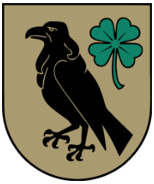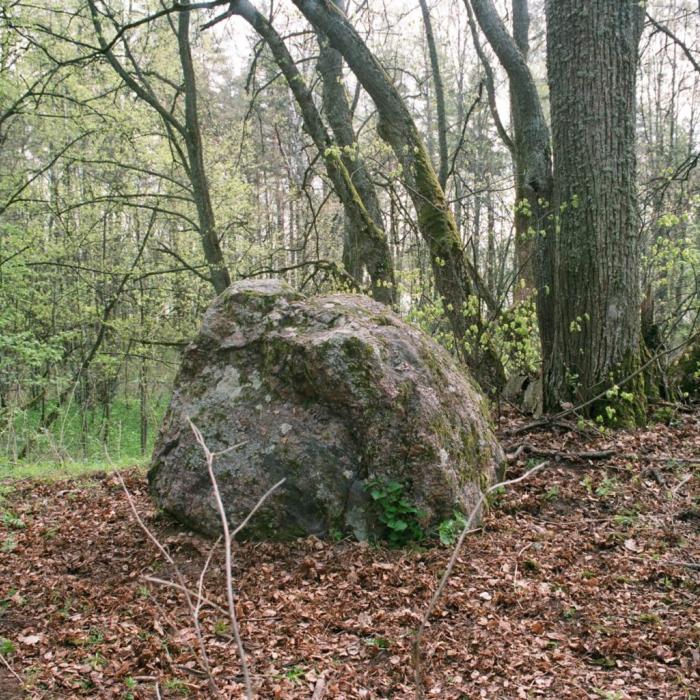Lielā (Upursala) sala in Rušona lake,
Rušona Parish, Preiļi Municipality
Lat: 56.1824815, Lon: 26.9987800
Sacrificial stone of Upursala – ancient Latgallian cult place, that is located on Upursala, in lake Rušona.
In the central part of Upursala (in English - Sacrificial island) is a swelling on the highest place of which is located a stone, that even today is called Upurakmens (in English - Sacrificial stone). According to a legend, the stone used to have carved writings and that lambs were sacrificed on it. Nowadays no carvings are visible. The Sacrificial stone is 1,2 m high and 5,5 m wide (on the ground). The upside of the stone is crumbled, possibly on purpose, the stone itself is coarse-grained. Fires were burned near the stone and on it - the crumbling and stone shards found around the stone indicate it. During archeological research, it was discovered, that nearby the Sacrifical stone were two shallow holes, in one of which were found half-burnt pine barks. During the excavation there were no antiques found that could possibly indicate the time period that Sacrificial stone was used. The items found nearby were of different time periods. Right now it is assumed, that Sacrifical stone was used as place of worship for local Kristapiņi, Liepu island, Mazie mucenieki and Kurtoša settlement inhabitants, and inhabitants of other ancient settlements. Upursala is located in the West side of Rušona lake, approximately 1,5 km from the Western shore, where Kristapiņu ancient burial place (8. - 13.century) can be found. The ancient burial place was nearby an even older settlement. Certain ancient items indicate, that the place was inhabited at the end of 1000 B.C., in the beginning of our era. Between Upursala and Kristapiņi ancient burial place stands Liepu island (in English - Linden island). In newspapers in 1936 it was stated, that near Liepu island, in the lake, paling of a very ancient building was found. In 1964 a hydroarcheological expedition, led by J.Apals, discovered that the wood constructions belong to a medieval building. In the few past years some chippings of ancient dishes were found on Liepu island. It could indicate, that people inhabited the island as well. The Northern shore of Rušona lake is closer to Upursala, because near the Mazo Mucenieku village a cape runs into the lake. A cultural layer has been discovered on the cape. Antiquities from medieval times have been found near Rušona manor too.
Approximately one kilometer North of Rušona lake is located the Kurtoša castle mound. From old times it has been cultivated and has lost its original appearance. All the shores of Rušona lake have been inhabited by people since old ancient times.


